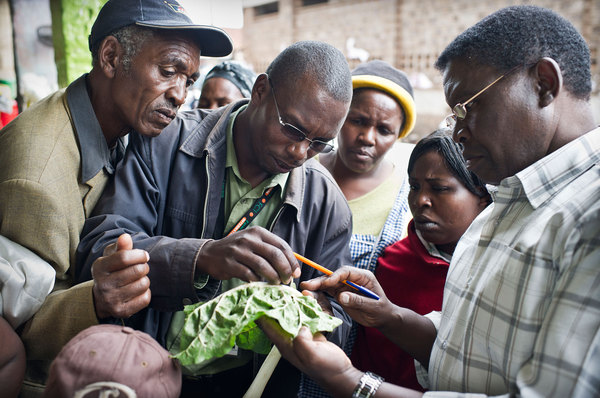Why it’s time for a Spice Girl come back
The 1990’s saw some significant steps made towards equality, democracy and sustainable living. Perhaps the thing that made the biggest impact on me was the ‘Girl Power’ movement, led by none other than the Spice Girl’s – their music might have been questionable, but they certainly made an impact. Fortunately for the rest of society,…
Ecosystem services and the need for sustainable intensification
Our first guest blog is from Professor Tim Benton. Tim is Professor of Ecology at the University of Leeds, where his research interests focus around agriculture-ecological interactions. He also currently has a role as “Champion” for the UK’s Global Food Security programme which aims to coordinate food security related research across the major public funders.
Getting Older Quicker: Wheat’s New Ageing Problem
Many of us dislike getting older, but you can usually predict how it will go: next year you expect to be 1 year older and you expect your body to be 1 year older. But what if instead of continually growing over a year, your body instead decided to grow for 6 months and then stop…
Agricultural Super Ducks
Agricultural super ducks? You may think that the entire phrase is flawed. Ducks waddle around in parks, not on farms. You probably have never thought of them as being particularly ‘super’ as they paddle around the park pond, searching for scraps of bread. However, you’d be mistaken, as I was, for the humble duck is…
Radio initiatives aiding remote African farmers
Information and communication technology has advanced rapidly in the past few decades. Many of us now take connection to the internet and easy access to information for granted. However, in remote parts of the world, even access to electricity is infrequent and unreliable, and communication technology is developing in a way that reflects this. In…
India’s Food Security Challenges
Agriculture is very important to India, employing 55% of its population and providing 16.5% of its annual GDP. The industry as a whole is worth US$ 17.5 million alone in exports. However, it’s not all plain sailing, with low productivity and regional groundwater depletion currently threatening Indian agriculture. Climate change and the demands of an…
Why we should all be batty about agriculture
Bats are perhaps one of the best kept secrets of agricultural success. As nocturnal fliers they are often ‘out of sight, out of mind’, but insectivorous bats (Chiroptera) provide us with a natural, eco-friendly, and free pest control solution, saving North America alone an estimated $3.7 billion every year. Good news then? Not so much…
The problems of achieving food security for 1.6 billion people in China
It is predicted that the population of China will stabilise at 1.6 billion within the next two decades. In order to feed this many people, crop production will need to increase by 2% each year to provide the estimated 580 million tonnes of grain that will be required. Mingsheng Fan and colleagues have published a…
The seed social network
A new study by the International Institute of Tropical Agriculture (IITA) looking at cowpea crop diversity following floods and drought in Mozambique has shown that seed sharing networks are a valuable way to maintain, and often improve, crop diversity. Informal sharing and trade of seed within and between local communities in the Limpopo River Valley,…

